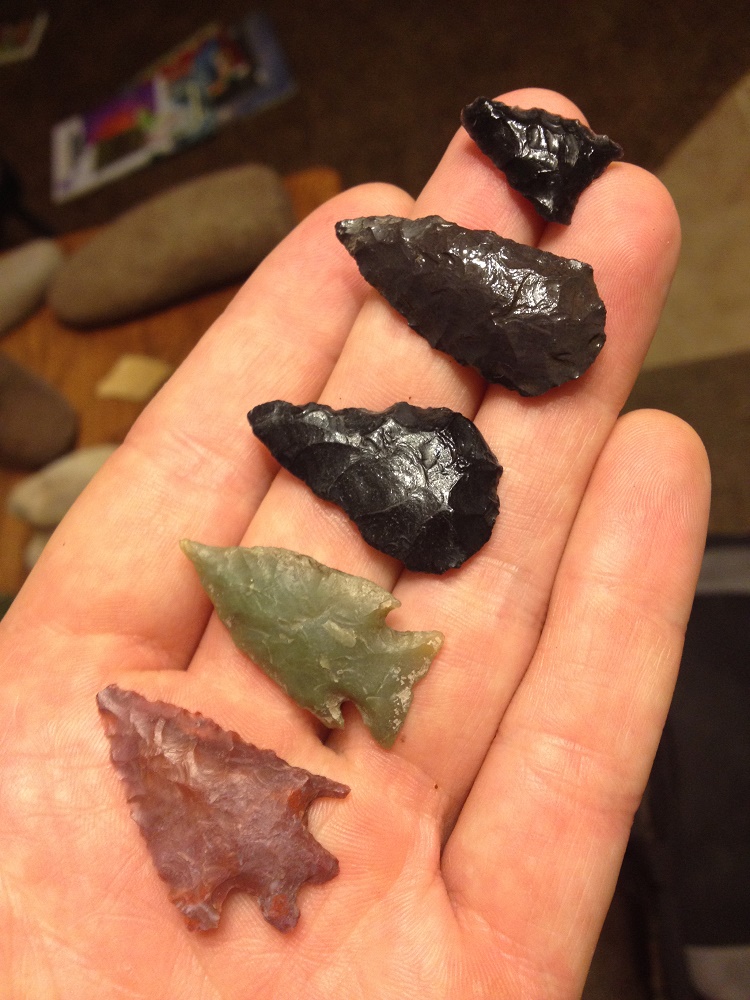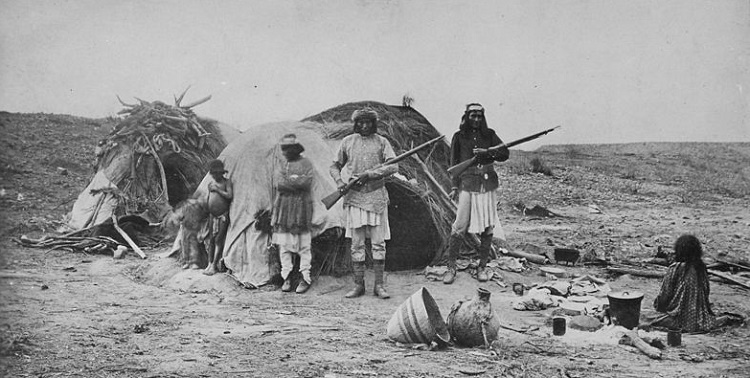Searching for artifacts is a great way to get outside. Just be careful… hunting arrowheads is addictive!

Hunting for ancient artifacts is something that you can do just about anywhere. In the United States there were Native American tribes in every part of the country, and they left behind stone tools and other artifacts that you can find.
The most popular thing for most people to find are arrowheads. Some can actually be quite valuable, although most artifact hunters are looking to add pieces to their collection, not to get rich.
To find valuable artifacts there is some luck involved, but more importantly you need to follow a few basic guidelines. Some places are much better than others when it comes to artifact hunting.
To help you get the best from your artifact hunting here are important tips:
Know the Laws on Artifact Hunting
First and foremost, we need to talk about laws regarding picking up arrowheads.
Many people start their artifact hunting on the wrong footing by ignoring the local laws and regulations that govern hunting for arrowheads and other artifacts. If you are careless regarding local laws when hunting for artifacts you are likely to risk your finds being confiscated by the authorities and even being fined or even jailed.
Now don’t let this scare you. All I am saying is that you need to understand the laws so you can avoid any issues. There are plenty of ways that you can legally hunt for artifacts.
Private Lands
You will have no legal concerns if you are hunting on private lands with landowner permission. Just make sure you actually do get permission!
In the United States, trespassing is an offense all the 50 states. If there is a vacant piece of land that you want to hunt artifacts on the make sure you find out who the owner is and then you ask for permission. Picking up arrowheads on private property would constitute not just trespassing, but also theft.
Public Lands
This is where things get a little bit trickier.
There are a wide array of different types of public land ranging from county parks all the way to federally owned land. Even federal lands have different designations such as BLM land, National Parks, Wilderness Areas, etc. You need to know the land status of the land that you are collecting artifacts, or you might find yourself in major troubles with the law.
Artifacts and antiquities are protected by the Archaeological Resources Protection Act of 1979. I suggest you read it in detail if you plan on venturing onto public lands to hunt.
I have heard a lot of people come up with various interpretations of the law and what it actually allow, and doesn’t allow you to do on public land. I have even spoken with BLM Archaeologists who say that “incidental” collecting of arrowheads is alright (meaning that you can pick up surface arrowheads while doing other activities while recreating on public lands).
Most will tell you that under no circumstance are you allowed to collect artifacts from public lands.
The “Jimmy Carter Loophole” is often referenced by artifact hunters as the reason that surface collecting is alright. However, most people who understand the writing of the law say that despite the text regarding surface collecting, you are still breaking the law if you pick up an arrowhead on public land.
I am NOT telling you what you can or can’t do on public lands regarding to arrowhead hunting. If you want to be absolutely certain, then by all means avoid public lands and only hunt on private property with permission.
I will say that there are thousands of hunters, ranchers, hikers, rockhounds and other public land users who pick up an arrowhead from time to time and the black helicopters haven’t swooped in on them yet. However, these are surface finds. Digging and sifting are taken seriously as should never be done on public lands.
My personal belief is that surface collecting of arrowheads is about as bad as jaywalking. Nonetheless, my opinion doesn’t really matter. The law is what matters.
Again, I suggest that you read the Archaeological Resources Protection Act of 1979 yourself and decide what you want to do.
Where to Hunt for Artifacts
You don’t just wake up and start searching your backyard in the hopes of finding artifacts (although it has happened!). There are places where you can find artifacts and there are other places where there are none.
You need to know the best places to make your artifact hunt successful.
Always remember the 3 things that all people need: Food, shelter and water.

Most indian relics that you will find are made from stone. However, as seen in this picture, Native Americans acquired guns after Europeans started to settle the U.S. It might be a good idea to search Indian campsites with a metal detector to search for metal relics.
The single most important (and easiest to find) is water. Native Americans set up their camps near creeks, rivers, and lakes. The camp wasn’t necessarily right next to the water, but it was often on a nearby bluff that was still close enough that the water was easily accessible.
Other places to search are old trading centers. These are rendezvous points where tribes would meet to trade with each other, and during the past few centuries they would trade with European settlers and fur trappers. These are also good sites to metal detect because Europeans would bring metal items to trade.
It is important you study your local history to know the settlement in the area. This will help you make the right decisions in regards to areas to hunt for artifacts. Also, remember to listen to local prospecting news and news from the local construction site. You may get some important insights on where to look for.
Surface arrowheads are easier to spot in the desert where there is less ground cover. Forest can hold a lot of artifacts too, but the dirt and ground cover can make artifact hunting almost impossible. In forested areas I recommend checking river beds and dried up creeks.
Also Read: Metal Detecting for Relics in Old Mining Camps
And: 22 Metal Detectors that Punch Deep on Coins and Relics
Surface Hunting Artifacts
Spotting artifacts can quite difficult, especially to the untrained eye. Scan every inch of the ground in the area that you are hunting for them. Keep your eyes alert especially to items with sharp edges, flaked surfaces or shapes different from the rocks. This will help you find artifacts that most other people may fail to notice.
Take note of the type of material that the Indians used to make their arrowheads. In some areas it was black obsidian that can be easily spotted once you know what to look for. Cherts and hard jaspers can be harder to spot but you will get better as you train your eyes.
Arrowheads aren’t the only thing that you can find. Other artifacts include earrings, pottery, necklaces, stone tools and hammerheads. If you find an ancient campsite, take your time and search the area carefully for anything you can find.
If you are a beginner it is important that you are patient because it may take you time to develop your skills and get some luck.
Digging and Sifting for Arrowheads
Most people who hunt for artifacts simply search along the surface and don’t need to do any digging. Digging will often be fruitless because there will only be one piece in any particular area.
Sifting is only productive when you have located an actual site with a high concentration of artifacts.
Make sure that you manage the site of your hunting well. Often you will have to dig up the artifacts you find from deep in the ground. It is important to fill up any hole you dig up and to dispose of any trash you have in the proper manner.
Digging should ONLY be done on private lands with permission from a landowner. Digging on public land will land you in big trouble and is much more serious than casual surface collecting.
Finding That First Piece
If you’ve never found an arrowhead before, it can seem like there just aren’t any to be found. For years all I ever found was chipping, and maybe an occasional broken piece. It took me years to find my first intact arrowhead.
After that, they came a bit easier. They are still hard to find though, which is why they are such a treasure!
If I can give you 3 main tips that have helped me over the years they would be:
Hunting for artifacts is a wonderful pastime and a great way to get out and enjoy nature. Get out of the house for a while and see what you can find in your area!
Next: The Bounty Hunter Tracker IV – A Good, Cheap Metal Detector







